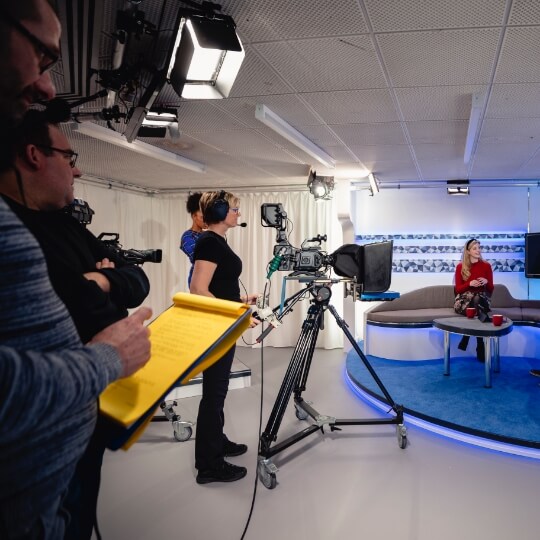Online safety tips for media organisations

Does your media organisation share the work of journalists via social media to extend its reach? Does it encourage journalists to use their social media profiles to engage with audiences?
If so, your media organisation has a responsibility to help your journalists prevent and deal with online abuse and its impacts.
However, research shows journalists are unlikely to report abuse to their employers – especially if they are from culturally or linguistically diverse backgrounds. When they do, managers can be dismissive, seeing social media abuse as the journalist’s own issue to manage or disregarding the seriousness of the situation.
Journalists who are left on their own to deal with an experience that can be extremely traumatic and isolating often self-censor or step away from visible roles in the media. This can impact on diversity and balance, so it’s in the interest of media organisations to bring about a cultural shift towards safety and support.
The following tips are likely to help. These were developed by The Australian Broadcasting Corporation's (ABC) Social Media Wellbeing Advisor* following an ABC hosted Cybersafety Summit in 2021. The summit brought together experts from across the industry and journalists from the Australian Broadcasting Corporation to discuss the issue of work-related online abuse and potential solutions. They have been reviewed by eSafety and shared here so other media organisations can also use them to support journalists.
Approach the issue from the top down
All levels of management should promote discussions and resources about social media safety practices. Initiatives like hosting forums, offering training, hiring Social Media Wellbeing Advisors and creating resources for staff signal to journalists that they are supported. For example, the ABC has a Cybersafety Steering Committee that meets to share experiences, solutions and tackle key issues together.
Give staff a voice
It is important for media organisations to know what journalists see as the most important issues to address, and work with them on solutions that meet the needs of all staff members, including social media moderators.
Make time to discuss online issues, clarify key priorities and provide opportunities to give anonymous feedback. Running staff surveys to collect insights and feedback can be helpful.
Establish a Peer Support Program
The International Press Institute recommends peer support as one of the most effective means of counselling for journalists. Peer Supporters are employees who have been trained to support colleagues during times of professional or personal distress, using listening and referral skills and trauma and resilience best practice – often informed by their own experience of successfully dealing with similar issues.
Peer Supporters should be given specific training in online safety practices, including how to deal with online abuse and when to report it to the social media service or eSafety.
Provide psychological support
The psychological impacts of social media abuse can include decline of mental health, self-esteem and confidence. As well as Peer Support, media organisations should provide confidential access to professional counselling or psychological support for staff who experience social media abuse – and a culture where journalists feel they can use it without stigma.
Have clear points of contact to assist in incidents
It is recommended there are clear points of immediate contact so journalists know who is available to help them at the time they are experiencing online abuse. This could be a line manager, member of the editorial team, health safety and wellbeing officer, someone on the security team or even a dedicated Social Media Wellbeing Advisor as employed by the ABC. Journalists need to feel empowered and supported to seek help.
Recognise that abuse is not evenly distributed and provide tailored support
Female journalists, First Nations journalists and journalists from diverse racial or social backgrounds are more likely to experience online abuse. Also, the abuse they experience is more likely to be severe, personalised and threatening.
It is important for media organisations to acknowledge the misogyny, homophobia, racism and other forms of discrimination that often fuel online abuse, attempting to manipulate or stifle particular conversations and voices. Media organisations should provide resources that speak to specific experiences of female journalists and others who are at higher risk of abuse, and provide tailored training and protections for them.
Don’t use social media engagement as the only measure of success
Media organisations should review whether they prioritise online engagement over staff wellbeing. Headlines, article previews and social media copy that focus on the most controversial or outrage-invoking element of a story to generate engagement can expose journalists, talent and moderation staff to heightened risks. The health of social media conversations should also be considered when measuring success of content.
*eSafety has collaborated with the Social Media Wellbeing Advisor from the Australian Broadcasting Corporation (ABC) to develop these best practice tips for the media industry.
Last updated: 11/04/2025


